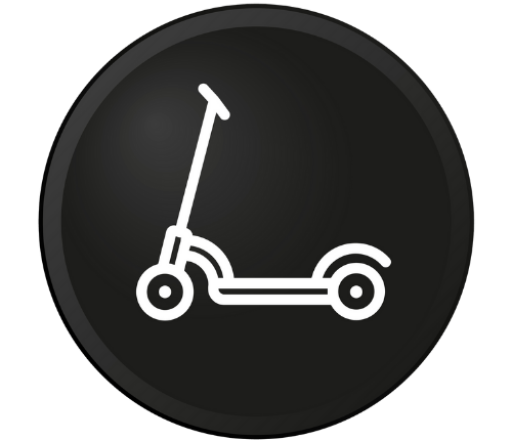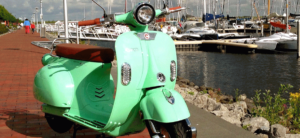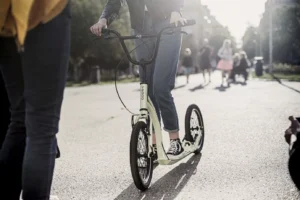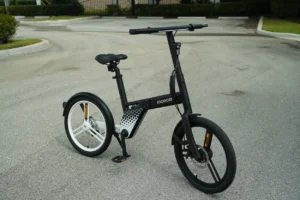Folding bicycles are a fantastic blend of convenience and functionality, offering the freedom of cycling with the portability necessary for urban living.
However, like all bikes, they require regular maintenance to keep them performing at their best. This guide will provide you with essential maintenance tips to ensure your folding bicycle remains in top condition, prolonging its lifespan and ensuring a smooth ride.
1. Regular Cleaning
Frequency
Clean your folding bicycle at least once a month, or more frequently if you ride in wet or muddy conditions.
Process
- Rinse: Use a hose or a bucket of water to rinse off dirt and grime.
- Wipe Down: Use a soft cloth or sponge with mild soapy water to wipe down the frame, wheels, and other components. Avoid using high-pressure water, which can force dirt into bearings and other moving parts.
- Detailing: Use a toothbrush or a small brush to clean hard-to-reach areas like the chain, derailleurs, and folding mechanisms.
- Dry: Thoroughly dry the bike with a clean cloth to prevent rust and corrosion.
2. Lubrication
Key Areas
- Chain: Use a bike-specific chain lubricant to keep the chain running smoothly. Apply a few drops, rotate the pedals to work it in, and then wipe off any excess.
- Folding Joints: Lubricate the folding hinges and joints regularly to ensure smooth operation. Use a light lubricant and wipe off any excess to prevent dirt buildup.
- Cables: Lubricate brake and gear cables to keep them operating smoothly and to prevent rust.
Frequency
Lubricate the chain every 100-200 miles, or more often if you ride in wet or dusty conditions. Apply lubricant to folding joints and cables every few months.
3. Checking and Adjusting the Folding Mechanism
Inspection
Regularly inspect the folding mechanism for signs of wear, looseness, or damage. Pay close attention to:
- Hinges
- Latches
- Clamps
- Quick releases
Adjustment
- Tighten Loose Bolts: Use the appropriate tools to tighten any loose bolts or screws. Ensure all folding points are secure but not overtightened.
- Check Alignment: Ensure that the bike folds and unfolds smoothly and that all parts align correctly. Misalignment can cause excessive wear and impact the bike’s performance.
4. Brake and Gear Maintenance
Brakes
- Inspection: Check brake pads for wear and replace them if they are worn down. Ensure brake cables are not frayed and that they move smoothly.
- Adjustment: Adjust the brake tension so that the brakes engage properly. Test the brakes regularly to ensure they provide adequate stopping power.
Gears
- Inspection: Check for smooth shifting and inspect the derailleur for alignment and wear.
- Adjustment: Adjust the gear cables to ensure smooth and accurate shifting. Lubricate the derailleur to keep it moving freely.
5. Tire and Wheel Maintenance
Tires
- Pressure: Check tire pressure regularly and inflate to the recommended PSI. Properly inflated tires improve ride quality and reduce the risk of flats.
- Inspection: Inspect tires for cuts, punctures, and excessive wear. Replace tires if they are damaged or worn out.
Wheels
- Truing: Ensure the wheels are true (straight). A wobbly wheel can affect the bike’s handling and lead to uneven tire wear. Use a spoke wrench to make minor adjustments or visit a bike shop for more significant truing.
- Hub Maintenance: Check wheel hubs for smooth rotation. Lubricate the bearings if necessary or have them serviced by a professional.
6. Frame and Structural Integrity
Inspection
Regularly inspect the frame for cracks, dents, or other damage, especially around the folding joints and hinges.
Maintenance
- Tightening: Ensure all bolts and screws on the frame are tight but not overtightened.
- Protecting: Apply a frame protector or use clear tape on high-wear areas to prevent scratches and damage.
7. Storage
Indoors
Store your folding bicycle indoors to protect it from the elements. If indoor storage is not possible, use a high-quality bike cover.
Position
Store the bike in a dry, cool place, preferably in an upright position. Avoid leaning it against walls or leaving it in areas with high humidity.
8. Professional Servicing
Frequency
Even with regular home maintenance, it’s a good idea to have your folding bike professionally serviced once or twice a year. A professional can perform detailed inspections and adjustments that go beyond basic maintenance.
What to Expect
During a professional service, expect:
- A thorough cleaning and lubrication
- Brake and gear adjustments
- Wheel truing
- Detailed inspection of all components
Conclusion
Maintaining your folding bicycle is essential to ensure its longevity and reliable performance. By following these tips, you can keep your bike in excellent condition, ready for your next commute or adventure.
Regular cleaning, lubrication, and inspections will go a long way in preventing issues and enhancing your riding experience. Remember, a well-maintained bike is not only safer but also more enjoyable to ride.



